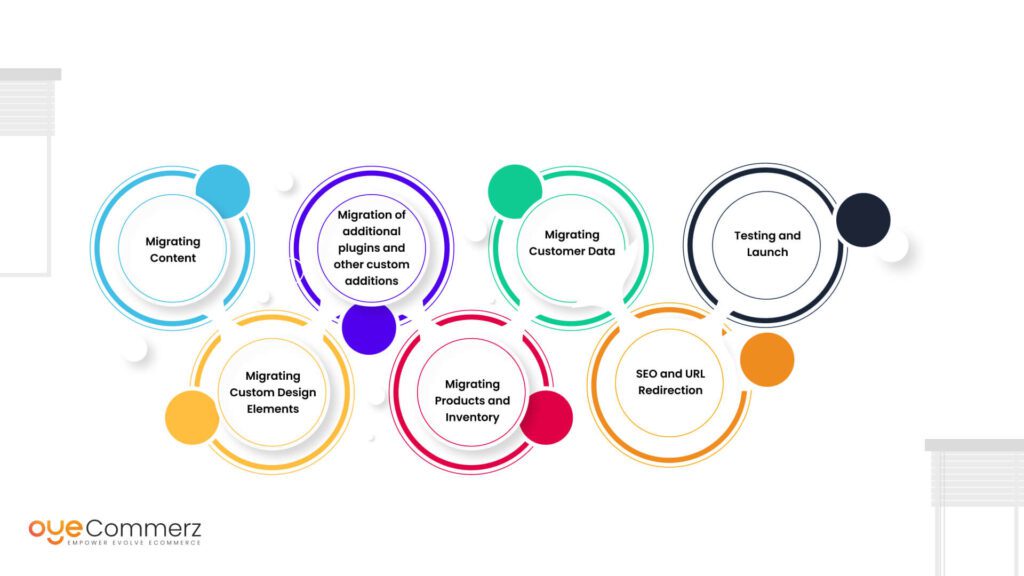In the constantly changing sphere of digital commerce, selecting the best system is essential for your company’s prosperity. If you’re at the moment using WP and thinking about a migration to an alternative, you’re not alone. Countless businesses are shifting to take advantage of Shopify’s comprehensive capabilities, user-friendliness, and scalability. This guide will take you through the steps of migrating from WP to Shopify seamlessly, making sure that you achieve your eCommerce potential.
Why Transition from WP to Shopify?
Before diving into the migration journey, it’s important to know why this shift can be helpful for your online store:
User-Friendly Interface: Shopify features an user-friendly system that makes easier store management, allowing for non-technical users.
Growth Potential: As your company expands, Shopify can handle greater traffic and transactions without sacrificing performance.
Built-in Tools: Shopify comes with built-in resources for search engine optimization, analytics, payment processing, and more, minimizing the need for multiple plugins.
Enhanced Security: With Shopify, you get access to strong security measures that secure critical customer details.
Steps for a Effortless Migration
Migrating your online store from WordPress to Shopify requires key actions.
Here’s how to achieve a hassle-free transition:
Plan Your Migration Approach
Kick-off by mapping out your migration strategy. Decide on which elements of your current site you plan to move, such as:
Product data
Customer information
Purchase logs
Articles
Select the Best Migration Solution
Considering your requirements, opt for a migration package that aligns with your business. Migration experts delivers multiple options:
Entry-Level Plan: Perfect Shopify data backup tools for compact stores with minimal products.
Regular Option: Recommended for mid-range businesses with moderate demands.
Comprehensive Solution: Best for big stores demanding custom customization.
Secure Your Data
Ahead of starting the migration, make sure that you have a complete archive of better eCommerce platform your WP site. This step is critical in situations where anything goes awry during the move.
Export Your Information from WP
Utilize extensions or manual methods to transfer critical data from your WordPress site:
Items
Customers
Transactions
Blog posts
Upload Data into Shopify
After you have your data exported, employ Shopify’s built-in features or third-party apps to transfer your data into your updated store. Ensure that all content is properly formatted and placed.
Adapt Your Shopify Platform
Following importing content, tailor your Shopify site’s design to reflect with your style. Consider engaging a developer if you require detailed customization.
Establish TransactionOptions and Delivery Settings
Arrange transaction methods and delivery choices in Shopify to facilitate a smooth transaction experience for customers.
Implement Search Engine Optimization Guidelines
To maintain your search engine rankings during the transition:
Set up 301 link updates from existing URLs to migrated ones.
Revise metadata.
Adjust media and copy for search engines.
Test Your New Platform
Prior to going live, extensively check your Shopify store. Look out for any discrepancies, checkout failures, or incomplete files.
Publish Your Platform
After everything is in place, it’s the opportunity to launch! Announce the change to your customers and motivate them to discover the new features of your Shopify store.
Post-Migration Guidance
Even after publishing your new store, regular assistance is key. Consider engaging professionals who can help with:
Troubleshooting
Customer engagement
Performance optimization
Conclusion
Migrating from WP to this platform can be a transformative move for your eCommerce. By following this guide and working with experts like those offered by dedicated providers, you can ensure a seamless transition that boosts your online presence. Accept the shift and realize the full capabilities of Shopify today!
